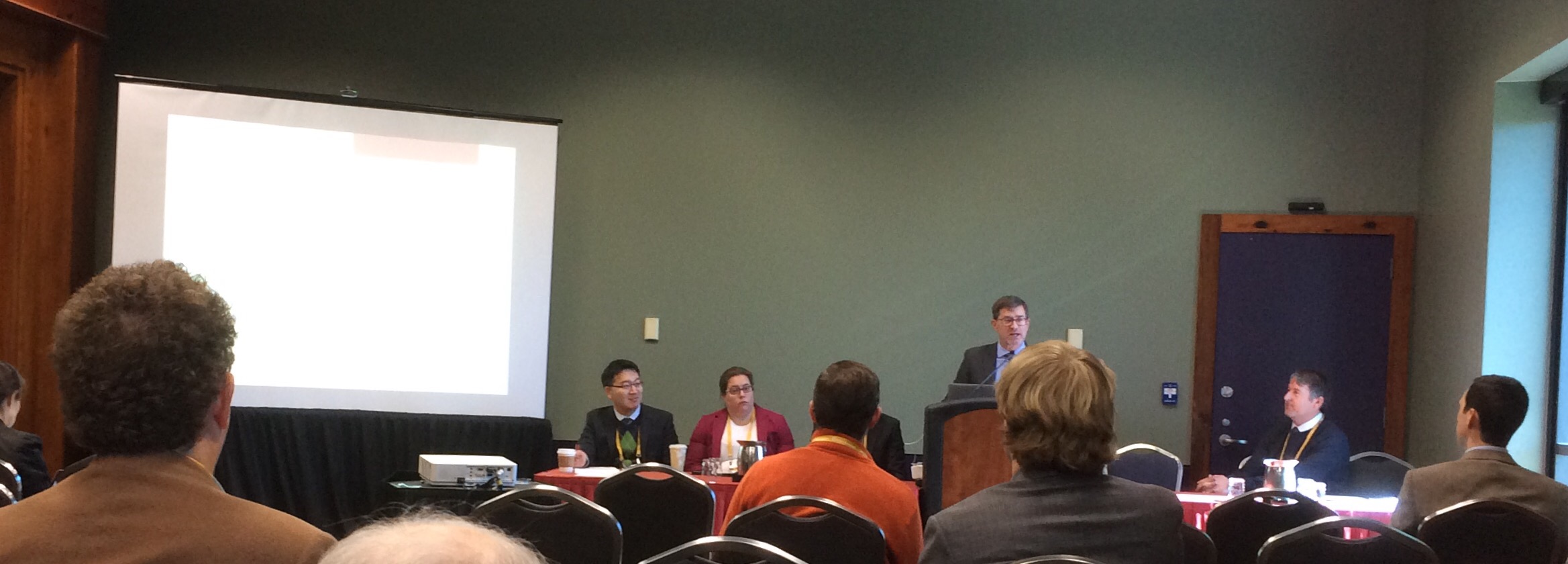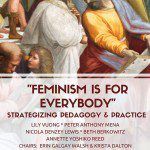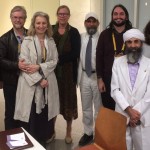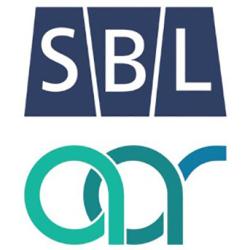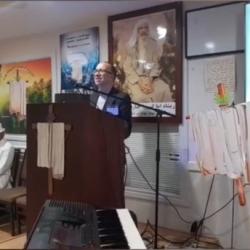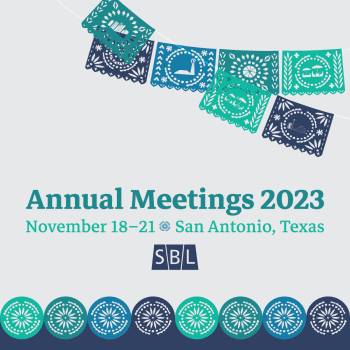Before heading to the 1pm Digital Humanities session on scholarly communication, I saw a tweet saying that if publishers want to reach the public and have them well informed, we cannot continue to make academic books so ridiculously expensive.
In the session, John Kutsko talked about SBLCentral, a project to move beyond RBL to a system that will notify scholars of relevant publications, as well as papers and programs at the annual meeting, based on keyword tagging in member profiles and in the reviews and session descriptions.
The second paper by Chan Sok Park and Jennifer A. Quigley focused on HarvardX’s course Early Christianity: The Letters of Paul. It mentioned other courses, such as World Religions Through Their Scriptures. The course on Paul’s letters also made videos and maps available online, and those are still there. The second half of the presentation focused on Prof. Nasrallah’s adoption of bell hooks’ pedagogical model. The ethos resembled a kind of Hippocratic Oath for users of the Bible: “First do no harm.” The course had more than 32,000 enrolled from 169 countries. Data on the gender makeup of students who enrolled, and their educational backgrounds, was shared and very striking. Almost all had at least a bachelor’s, and more had a PhD than had only a GED. 40% of the students in the MOOC met face to face with other participants at some point. The presentation concluded by noticing that utopian hope is something that professors as well as religious communities subscribe to. In the question time, issues such as assignments and assessments were brought up, and the way one school wanted to “adjunctify” their philosophy program, using Harvard lecturers and just pay their own faculty to do grading.
Brett Graham presented next, on the development of algorithms to automate word searches to seek borrowed words. Existing algorithms include the ‘bag of words,’ ‘greedy string tiling,’ and sequence alignment. The first is what is used in cases such as junk mail filters, for instance to treat any e-mail mentioning ‘VIAGRA’ as spam. These all have important scholarly uses, and work well for quotations, but are not effective in finding other kinds of derivative material. Graham used the reference to Moses and snake from Numbers 21 in John 3. John adds wilderness to make the allusion more specific, but that word does not occur in Numbers, and searching only for Moses and snake also produces the story of Moses and his staff in Exodus as a result. Graham drew on his background in computer science in seeking a solution, developing new operators such as “closely followed by.” For a paraphrase one needs something different. This obviously does not completely automate the process, but it can narrow down the material a scholar has to look at to a more manageable number. Graham’s system looks to identify combinations of words found in conjunction in nine or fewer texts. The search automates the process by adding additional words to the search until that level of rarity is achieved. The benefits of this algorithm are that it can find references with low verbal similarity, and search large collections of source text. It thus has applicability to matters such as the influence of Jewish pseudepigraphal works in the NT, or which NT texts had the biggest influence in the Reformation. Graham used Accordance software to perform these queries. The hard part is the database and not defining the search.
Josh Mann then gave a paper called “From Scrolls to Scrolling.” Its focus was on making the most of new modes of communication . He began by categorizing communication in terms of its length and its formality. This was very useful since it showed that digital, print, and verbal modes of communication may fall in the same quadrant. After these introductory remarks, Josh focused on two examples. One was Mark Goodacre’s discussion of Paul Foster’s interaction with Mark’s blog post about the Gospel of Peter. (Note as well that blog posts are now being included in WorldCat!) The second example was the Gospel of Jesus’ Wife. A British REF impact case study in 2014 looked at the impact Francis Watson’s PDF hosted on Mark Goodacre’s blog. Josh suggested that Watson’s PDF was still more formal than a blog post, even though it was hosted on a blog. He also noted that the PDF was submitted to the REF assessment as an example of impact rather than scholarly output. Josh concluded with recommendations: try something new (start with DiRTdirectory.org); don’t let formal assessment be the tail that wags the dog; be prepared so that you know how to disseminate a “measured ‘response’ publication; we are increasingly our own publishers; and write about your digital work on your formal publications. In the question time, the relevance of style guides such as MLA may or may not convey to students (and others) that there is any distinction between them and the appropriateness of using them. Josh also asked the interesting question of whether Facebook and other social media are actually making the problems of fake news and echo chambers worse, or mostly just making us aware of a much older problem, namely that most people don’t think critically. Quigley shared an assignment she has used, having students evaluate the use of biblical texts by a politician or other public figure, in relation to biblical scholarship.


